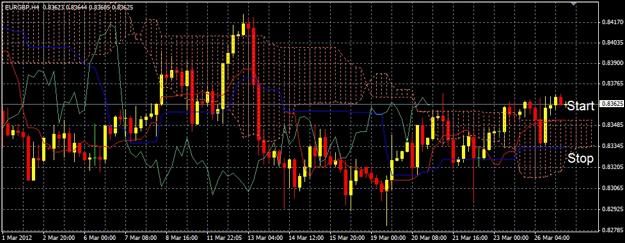
- Hedging = Minimising Losses
- What is Hedging?
- Hedging Commodities
- Hedging Shares
- Forex Hedging (in-depth)
Also, investor should remember that although spread betting and CFDs are often used for hedging, they are both leveraged and therefore hedging isn’t that straightforward.
Hedging = Minimising Losses
According to Shai Heffetz of InterTrader, there are a few things that you should be aware of before attempting to hedging your own trades:-
Hedging is not a way to make money. In fact, if you use hedging too much you will reduce your profits in the long run.
Hedging is a way to minimise losses, note that the term used is ‘minimise losses’. Hedging is not about eliminating losses.
-
Hedging does not come without a cost. With spread betting and CFDs, every hedging trade has an associated cost in terms of the spread and the stop loss if the price goes in the opposite direction.
What is Hedging?
According to Joshua Raymond of City Index:It’s the classic ice cream stand example.
If you invest into an ice cream van, then the van is likely to make most money when the sun is shining. However, should it rain, revenues are likely to be down as consumers are unlikely to want to buy ice creams when they are drenched in rain.
A typical hedge against this would be to invest in an umbrella company. That way, when it rains, any losses made in the ice cream van are likely to be offset by the profits from umbrella manufacturer.
Hedging Commodities
The same can be said for trading and dollar denominated commodities and the US dollar
There has been a fairly strong inverse correlation between the price of crude oil, copper and other dollar-denominated commodities to the price of the US dollar index.
This is because the more expensive the dollar is, the more costly it becomes for non-holders of dollars to buy these commodities, and vice versa.
Therefore, if you are long of crude oil, your trade could hedged by going long on US dollars, this is because any fall in the crude oil market is likely to be picked up by dollar gains.
Hedging Your Shares
Likewise, you could hedge your equity portfolio. Let’s say have £5,000 worth of Royal Mail shares in your portfolio. You can short sell the equivalent of £5,000 worth of Royal Mail shares through a CFD trade or spread bet.
Should the Royal Mail share price fall by 5% in the underlying market, the loss in value of your share portfolio would be offset by a gain in your short sell.
Conversely, a loss in your CFD trade or spread bet would be cancelled out by an equivalent gain in your portfolio.
This enables you to retain your portfolio throughout volatility without incurring any significant loss to its overall value.
Hedging in the Forex Markets
Below, Shai Heffetz from InterTrader, takes a more advanced look at hedging, original article written 28-Mar-2011.One of the most common uses of hedging in the forex spread betting market is where an exporter wants to protect themselves against potential negative movements of a currency.
Let us say, for example, that you are a farmer exporting vegetables to the US market. You might be concerned that the value of the US dollar will decline during the period between the planting season and the time that you are ready to sell the produce.
In this case, hedging would imply going short on the US dollar and long on your local currency for an amount equal to the estimated value of your harvest.
If the US dollar should be in decline during the period in question, you will lose money on the produce you sell, but will make a similar amount on the hedging investment.
The cost comes in if the value of the US dollar should actually strengthen. In this case you will make additional money on the value of your exports, but lose a similar amount on your hedging investment, unless you close it before it reaches that stage.
Hedging in the Forex Spread Betting Market
Hedging is often compared to a form of insurance because traders often make use of derivatives instead of the full priced trading instrument.In the FX spread betting market this can mean that you could buy the protection of a hedge trade at an initial cost of much less capital than the amount you want to insure against.
Always be aware that leveraged investment formats carry a high level of risk and it is possible to lose more than your initial investment. Ensure you fully understand the risks and seek independent financial advice if necessary.
Using Multiple Currencies
If you are invested in the EUR/USD, you could of course go short for the same amount on the same currency pair.While that might protect you against any possible losses, it will also mean that you cannot make any profit.
An alternative approach is to go short on a related currency pair, such as the GBP/USD. If one goes against you, you will most likely make money on the other currency pair.
Closing a Hedge
Knowing when to close a hedge trade is as important, if not more important, than knowing when to start one.If the main trade actually goes in your favour, there comes a time when you should let go of the hedge. Failure to do that would, of course, mean that you forfeit any possibility of making a profit on the main trade.
In a sense, the problem is very similar to dealing with a stop loss; in an attempt to protect yourself against losses, you could actually end up wiping out your profits.
A general rule that some trades make use of is illustrated in the EUR/GBP chart below.
For example you may want to go short of the EUR/GBP spread betting market at the ‘start’ point, because you believe the price will turn around and head south, but you also want to protect yourself against possible losses.
In this case you could enter into a simultaneous long trade on a similar currency pair. If the main trade goes against you, you would have less to worry about because the hedge will protect you.
If, on the other hand, the trade goes the way you hope, then you will have to decide when to close the hedge trade.
The point marked ‘stop’ in the chart is one sensible moment to exit. This is where the EUR/GBP price has shown a clear break below the Ichimoku cloud.

Hedging and Rollover Trades
While this is strictly speaking not what we traditionally mean by hedging, some traders believe it is possible to make money by using rollover trades.This involves going long overnight on a specific currency pair with one broker who does charge and pay interest on overnight positions and then going short on the same currency pair with a broker who does not pay or charge interest.
While the net profit/loss on the trades should be zero, the trader can make a profit equal to the overnight interest he or she receives.
The contents of this report are for information purposes only. It is not intended as a recommendation to trade. Neither InterTrader nor CleanFinancial.com accept any responsibility for any use that may be made of the above or for the correctness or accuracy of the information provided.
Spread betting and CFD trading carry a high level of risk to your capital and you may lose more than your initial investment. Spread betting and CFD trading may not be suitable for all investors. Only speculate with money that you can afford to lose. Please ensure you fully understand the risks involved and seek independent financial advice where necessary.
